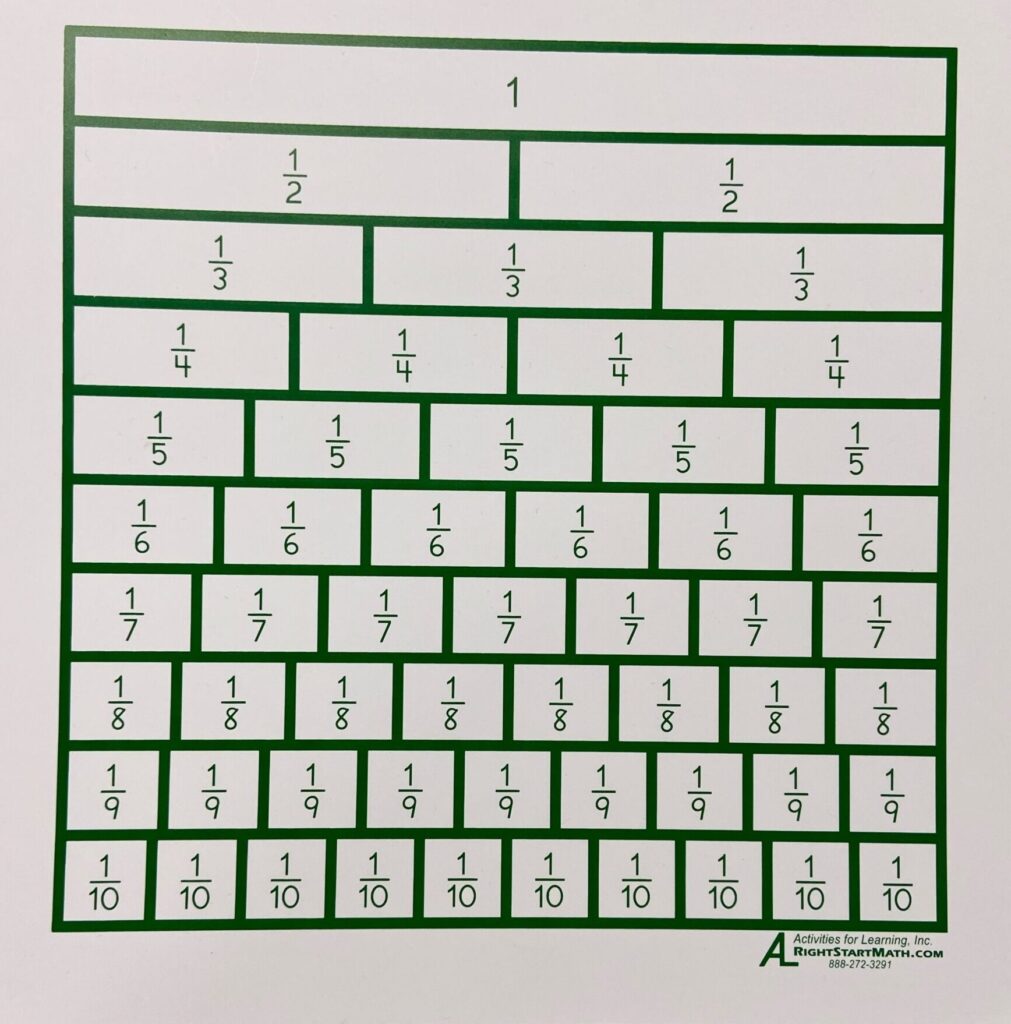Many people have the idea that fractions are incomprehensive and unpredictable. In fact, cartoons often express the fear of them as a source of amusement. However, when they are understood, they are amazing. They are also necessary for everyday life. For example, telling time, counting money, and cooking utilize fractions.
History of Fractions
Historically, fractions were only considered as part of a whole and could never be greater than one. The term fraction comes from the Latin word frangere, which means “to break.”
In the 1600s, the concept of fractions expanded. Mathematicians began using fractions as dividing two whole numbers. For example, one-third became thought of as 1 divided by 3. This new idea expanded fractions to include what we now call improper fractions. For example, 3/3 and 4/3 are now legitimate fractions because 3 could be divided by 3, and 4 could be divided by 3, resulting in a number equal to or greater than 1.
Not everyone welcomed this new view. So, those fractions that followed the traditional understanding of being less than a whole were named proper fractions. The new fractions, those that were not less than a whole, were called improper fractions.
Unfortunately, we still use the traditional idea of fractions as being part of a whole or as a part of a larger amount. In fact, the dictionary defines fractions as ‘a tiny part.’ If you look up fractions in a Thesaurus, you will see synonyms such as “fragment” or “snippet.” However, this is a limited view and can prevent or reduce the student’s understanding of them.
Fractions as Division
If fractions are now considered division, why do we still use the terms numerator and denominator instead of dividend and divisor?
These terms were used in the 1540s, where numerator referred to a counting process. The denominator referred to the parts being counted. This process created useless memory work. When I teach fractions, I delay introducing these terms for as long as possible.
When teaching math to children, the main goal is to help the child see the relationship between concepts. Therefore, we need to teach fractions as division as early as possible because they need to understand the link between fractions and division.
Circular Fraction Model

A common model used today, and one of the earliest models used for teaching fractions, is the circle. Many teachers use the “pizza model” to engage their students and help understanding.
However, this model has serious drawbacks. Many would agree that it is easy to see 1/2, 1/3, and even 1/4 of a circle. But, it is significantly more challenging to see or visualize 1/7, 1/8, or 1/9.
There are other drawbacks when using the circular fraction model. How do you compare fractions? For example, how do you help the student 4/5 with 5/6 when using the circular fraction model? Can they cut out the pie pieces to compare the size of the shapes? What do you do with fractions that are greater than 1?

Linear Fraction Model
The Linear Fraction Model or fraction strips is a more powerful and versatile model to use when teaching fractions. The linear fraction model includes a series of ten rectangles that are 8 to 10 inches long each. The top strip has ‘1’ written in the center of it. The second strip is broken in half, with 1/2 written in the center of each segment. This pattern continues for the remaining strips to the tenths. These strips are placed in order, one right under the other, to form a fraction chart.
There are several variations of this model. Some fraction charts have different colors for each fraction family. While this may seem helpful for instructions, the colors actually create a distraction, and the size of the pieces is not as quickly seen. For this model to be effective, all the strips should be the same color.
Another variation of the fraction chart is removing the lesser-used fractions and adding additional ones. For example, some of these charts remove the 7ths and the 9ths and then add the 12ths. Not only are we telling our students that if we do not like the numbers, we don’t use them, but we also keep them from seeing interesting patterns within the fraction chart. When looking at a complete fraction chart, the student can see interesting arc patterns (hyperbolas).
When you introduce the fraction chart to your students, have them begin by assembling the strips like a puzzle while having the full fraction chart available as a reference. Even young children enjoy building the fraction puzzle again and again. Your students can do another fun activity by creating the fraction stairs. By the way, they can see half of a hyperbola when they do so!
A Story About Mike
Several years back, I tutored a third-grade student named Mike. He was moving out of the area and needed help in math.
To help Mike learn the foundation of fractions, I started by having him assemble the fraction chart like a puzzle. When he completed that task, I asked him, “Which is more 4 or 5?” He answered, ‘Five.” Then, I asked him, “But which is more, 1/4 or 1/5?” After viewing the chart, he stated, “1/4.” Once I saw that he quickly responded, I continued to ask him similar questions, such as “Which is more 2 or 3?” and “Which is more “1/2 or 1/3?”
Then I expanded on the topic by asking him different questions, such as “How many thirds is needed to make a whole?” After viewing the chart, he said, “3.” Then, I asked how many fourths, fifths, etc. And he was able to answer the questions.
After I explained to Mike how 3/4 was three 1/4s, Mike showed me where 3/4s was on the fraction chart. We spent some more time working through similar fraction associations.
At the end of a 45-minute tutoring session, I told Mike that he had done a great job but that he still had not yet learned everything there was to know about fractions. I mentioned that we had not started adding fractions, such as 1/4 plus 1/8. He looked down at the chart and said, “That would be 3/8.” Even without me explaining the process, he understood!
If you have a student who struggles with fractions, take a look at our Fractions Tutoring Kit. You can find more information about this product here. If you would like more information about the RightStart Math curriculum or any of our tutoring programs, feel free to contact us for more information.
